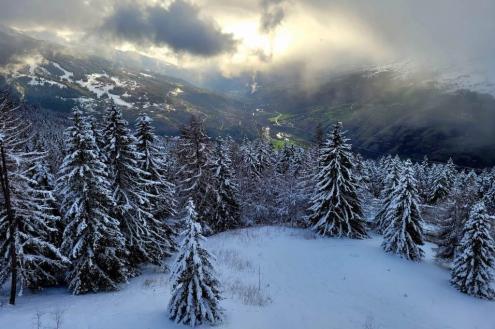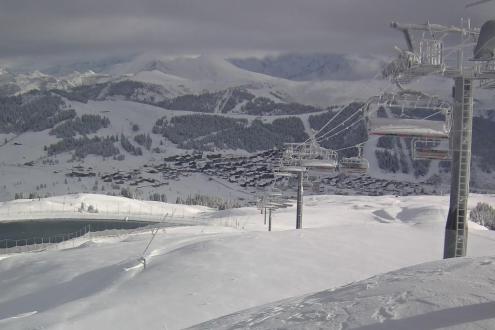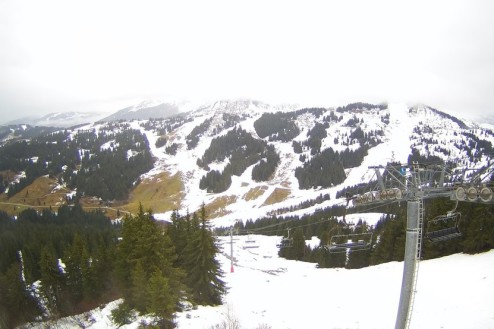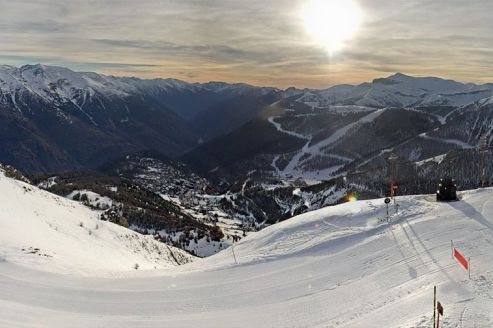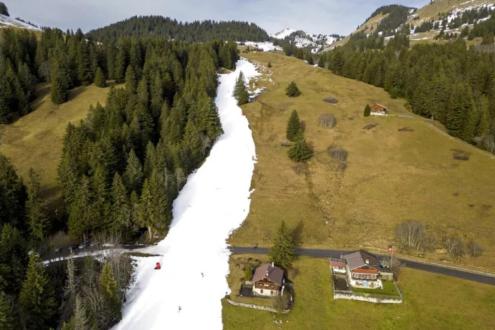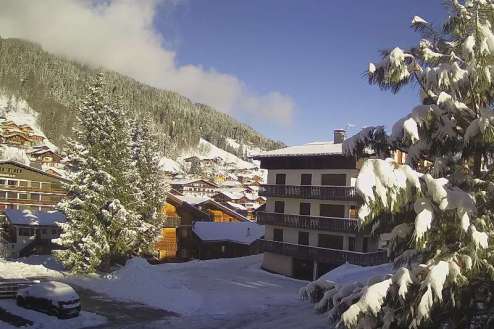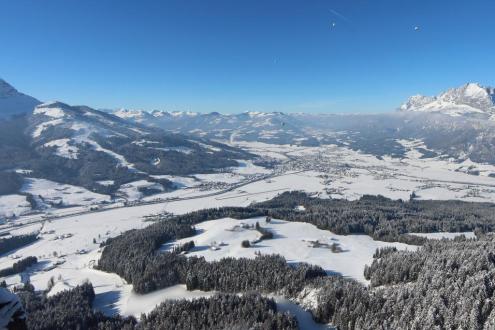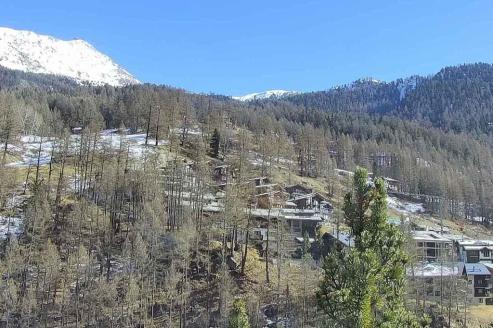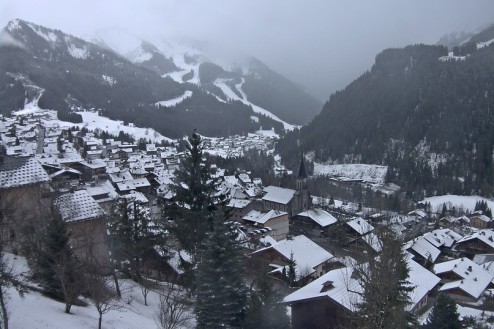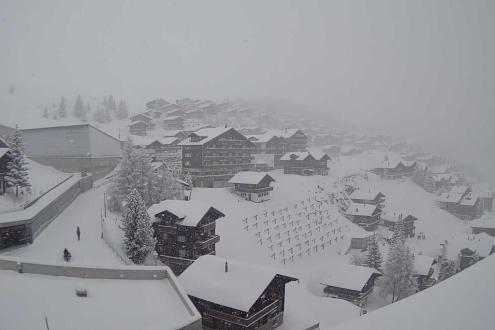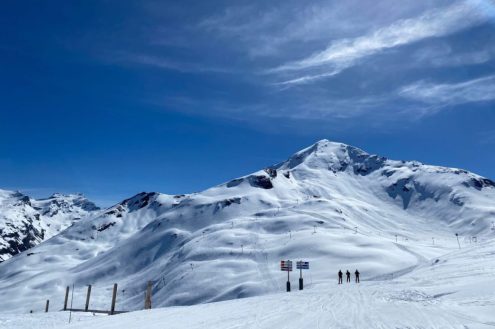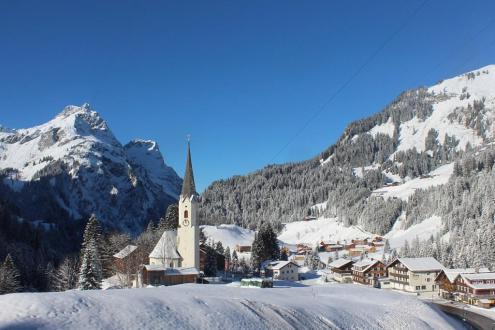Who got the most snow in the Alps in 2022-23?
by Fraser Wilkin, 6 October 2023
The 2022-23 ski season was a poor one overall for the Alps, with below average snowfall and above average temperatures across the board. Despite this, there was still some decent skiing on offer, especially on-piste. Indeed, some high resorts such as Val d’Isère and Obergurgl can look back on a perfectly reasonable season, even if big powder days were relatively few and far between.
For most of the Alps though it was a less than satisfactory winter, especially in the lower resorts of the central and western Alps, particularly early in the season when a serious lack of snow made headlines around the world.
A retrospective of the 2022-23 season
After a brutally hot summer and, by consensus, the ‘worst summer ski season ever’ (with only Hintertux clinging on by August), the first real taste of winter arrived in the Alps in late September by way of a big north-westerly storm. Although this dumped an impressive 50-70cm of snow in some north-western areas, this proved to have come too early to be of much use for the autumn glacier season, much of the good work being quickly undone by a return to warmer conditions.
October was a very mild month overall, and although a dozen or so glaciers were operational by the end of the month, the extent of open runs was very limited, and some big-name resorts were still missing. One of these, Les 2 Alpes, did not open for the autumn half-term holiday, which would have been unthinkable only a few years back, but has sadly now become the norm. Tignes was another notable absentee, not bothering to open its glacier for “pre-season” skiing for the first time in years.
November turned into a bit a ‘tease’, with occasional storms allowing a modest base to start forming at high altitude early in the month. This was followed by some more significant snow later in the month and some genuine optimism as to how early season conditions might pan out. Indeed, by the end of November, snow cover at higher altitudes was really quite good across much of the Alps, even lower down too in places, especially in the south-east (Dolomites).
Unfortunately, this early season optimism didn’t last that long. Although December started with no major dramas, and plenty of decent piste-skiing on offer across the Alps, the second half of December saw a rapid deterioration in conditions in many regions.
This began with the weather becoming very mild, followed by a lot of rain, especially in the north-western Alps (e.g. Portes du Soleil) which saw most of any lower-lying snow almost entirely washed away.
The highest resorts of the north-west (e.g. Tignes, Val Thorens) fared better, as did, more generally, the southern and south-eastern Alps (e.g. Dolomites) which avoided the worst of the rain.
Overall, though, the situation was far from ideal across most of the Alps in the run-up to New Year.
To add insult to injury, 2022 ended with a sudden, record-breaking spike in temperatures that proved to be the final nail in the coffin for many lower resorts, especially around the foothills of the north-western Alps.
So, January 2023 began with sub-standard snow conditions across most of the Alps. The problem was most acute in the lower resorts of the north-western Alps (e.g. Morzine, Gstaad, Adelboden), which was rapidly picked up by international media. Thanks to snow-making and skilful piste-management, most of these lower north-western Alpine resorts managed to keep at least part of their areas open. However, this was of little consolation for high-season holiday makers, some of whom had to be bussed or helicoptered over to the higher resorts of the Tarentaise, such as Val d’Isère and Val Thorens, which were much less affected.
In early January, the further south and east you were in the Alps, the better conditions were generally, with many south-eastern resorts (such as those in the Dolomites) continuing to remain almost entirely open and offering some perfectly enjoyable on-piste skiing. The situation finally improved in the second week of January with snow falling across most of the Alps, including the first significant snow at low altitudes since late November in the snow-starved north-western Alps.
During the second half of January, decent snow conditions prevailed across most of the Alps, with particularly good conditions in the far south-east (Styria, Carinthia) thanks to large but relatively localised snowfalls.
Despite the mid-January improvement, there was still concern about modest snow depths further west, however. By this stage, the snowpack was particularly meagre (relative to altitude) in the central and southern Swiss Alps (e.g. Andermatt, Zermatt) as well as over the border in Italy, in both the Monte Rosa region and Cervinia.
February started with very mixed snow conditions across the Alps. The eastern Alps, notably the eastern Austrian Alps (e.g. Obertauern) saw further significant snow and were offering some excellent skiing. However, it was mostly dry elsewhere, with many central and southern Swiss resorts (e.g. Zermatt, St Moritz) and some across the border in Italy (e.g. Monte Rosa, Madesimo, Livigno) not having seen any significant snow for weeks. Most resorts were still managing to offer some good piste-skiing, but any serious off-piste was limited to the far eastern Alps or a handful of the highest resorts in the west, notably those close to the French-Italian border such as Val d’Isère.
The mostly dry weather continued into the February half-term period and beyond. Skiers were able to enjoy plenty of sunshine during the busiest weeks of the season, however, the pistes were often hard-packed and in places quite icy, exacerbated by the crowds. The increasingly powerful sun also melted most of any natural snow that was left at lower altitudes, leading to an increasingly spring-like feel in the Alps.
In the central Alps, even some higher resorts like Zermatt were looking very green in mid to late February, which statistically should be the snowiest part of the season.
At this point, the best snow conditions continued to be found in Austria, close to the French-Italian border in resorts such as Val d’Isère and Montgenèvre, and especially in the far south (e.g. Queyras, Isola 2000) which saw a heavy snowfall to end the month.
March started quietly for most of the Alps, but became increasingly unsettled in the second week especially in the north-west, which saw lots of snow in the higher ski areas (e.g. L’Espace Killy, 3 Valleys) but also some rain lower down.
The weather remained rather unsettled for most of the month with further storms moving in from the north-west, which most favoured the northern French and western Swiss Alps.
Thanks to fluctuating temperatures, any benefit to low-lying resorts like Morzine was only temporary but, higher up, snow conditions in resorts like Verbier, and the Tarentaise (Val d’Isère, Les Arcs, La Plagne etc), were generally pretty good with more off-piste opportunities than there might have been earlier in the season.
The southern and eastern Alps saw less in the way of new snow throughout March. Most Austrian resorts remained in reasonable shape, however, natural snow cover disappeared from many lower-lying areas, especially in Italy.
April was an unsettled and relatively cool month, with widespread snowfalls across most of the Alps, sometimes even to quite low altitudes. While it was unfortunately too late for some resorts, many higher areas benefited greatly from this very late arrival of winter and enjoyed some of the best snow conditions of the entire season.
So who got the most snow?
First of all - a few words of caution regarding snowfall statistics in the Alps!
Unlike in the US, there is no real culture for collecting and comparing snowfall data in ski resorts on this side of pond. A number of figures are available with a bit of digging, but many of these are measured at resort level which means they are unlikely to be indicative of the ski area as a whole.
This point is of particular importance in seasons when the weather is changeable but mild, and frequent low-level rain can lead to greater than normal discrepancies in cumulative snowfall totals from top to bottom.
It is also important to remember that snowfall averages are only one aspect of the overall 'snow quality equation' and should certainly not be regarded as the most important factor when assessing snow reliability in any given resort.
In 2022-23 just about everywhere in the Alps saw below average snowfall. The only exceptions being some far eastern and south-eastern parts of the Austrian Alps (i.e. parts of Styria and eastern Carinthia) which, according to the Austrian meteorological association, saw snowfall close to or even a little above average.
In the northern French Alps, Avoriaz - statistically the snowiest French resort (at resort level, 1800m) - saw only 4.91m compared with its long-term average of around 7.5m. The resorts of the Tarentaise did a bit better (relatively speaking) with 4.81m in Val d’Isère (at 1850m) compared to an average of around 5.2m.
In Switzerland, snowfall totals were notably under par everywhere with around 3.99m of snow falling in Arosa (at 1800m) compared with its long-term average of around 5.5m.
Italian ski resorts were also uniformly below par. In the west, Cervinia managed only 3.98m at 2050m compared with its long-term average of over 5m. Further east in the Dolomites, Arabba was also relatively dry with just 2.54m (at 1600m) - around 1m short of its historical average.
Except for some parts of eastern and south-eastern Austria (Styria and eastern Carinthia), where we have yet to receive data for any ski areas, most of the country also saw below par snowfall totals. Typical of many of the classic lower-lying resorts of the Tirol and Salzburgland, the Ski Welt clocked just 90cm between December and April at 700m, well under half of what you might expect in an average year.
Higher and further west, in the notoriously snowy Vorarlberg province, Warth-Schröcken clocked a much more eye-catching 8.47m (at 1660m). This was significantly below its long term average of around 10.4m, but enough for us to once again crown it as the “snowiest ski resort in the Alps” in 2022-23, at least at or close to resort level.
If you enjoy reading our updates - please feel free to support us:



